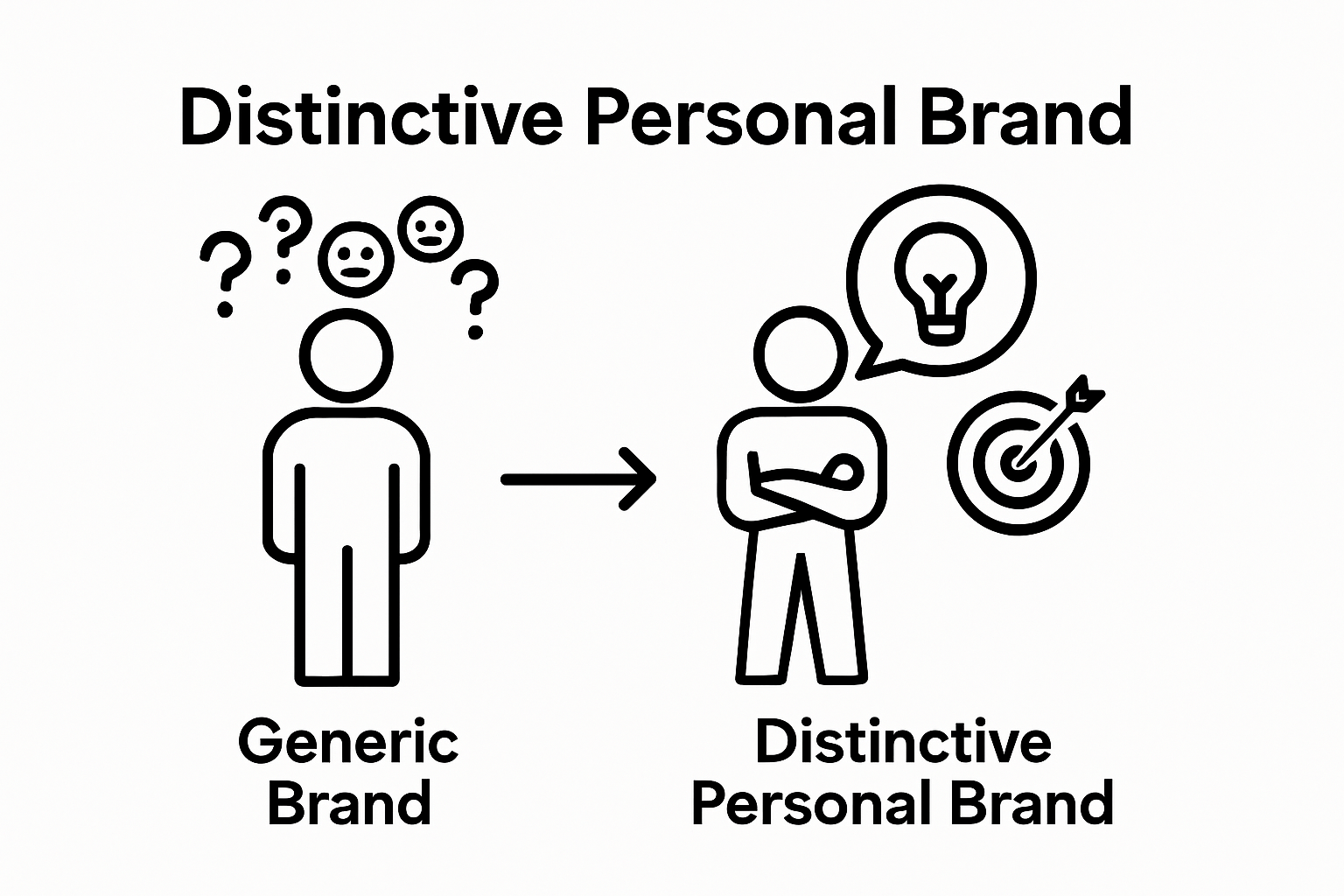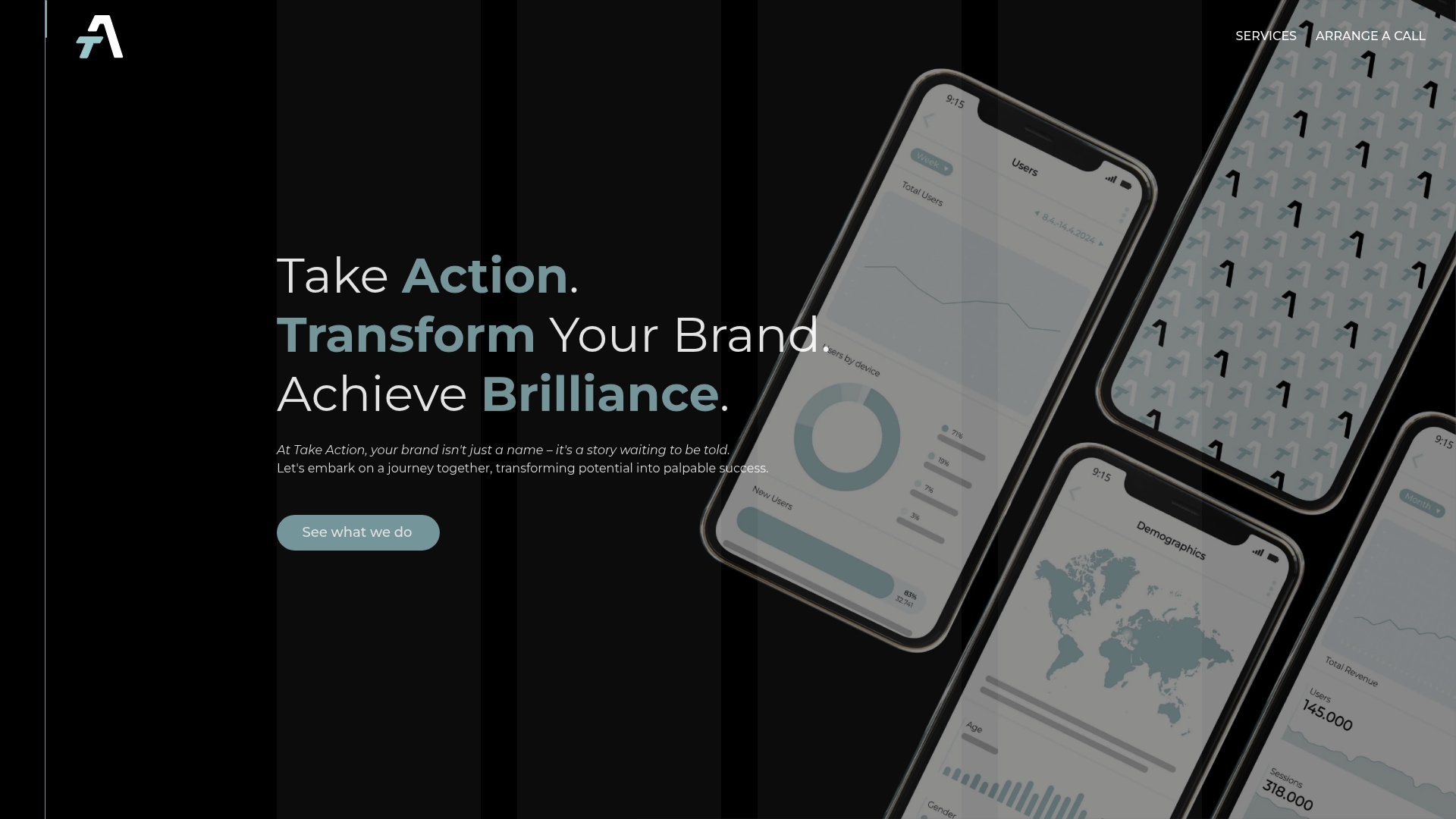Growing a Personal Brand: Boost Your Influence by 2025
Everyone’s trying to stand out, but growing a personal brand has never been more competitive. A consistent visual style can make you up to three times more likely to be recognized in your industry. Most people obsess over the latest social media tools or viral hacks. The real secret is building a personal brand from the ground up, starting with the parts most folks ignore.
Table of Contents
- Step 1: Analyze Your Unique Value Proposition
- Step 2: Define Your Target Audience And Market
- Step 3: Develop Consistent Branding Across Channels
- Step 4: Create Valuable Content That Resonates
- Step 5: Engage Actively With Your Audience
- Step 6: Measure And Adjust Your Brand Strategy
Quick Summary
| Key Point | Explanation |
|---|---|
| 1. Understand Your Unique Value Proposition | Identify skills and experiences that differentiate your personal brand from others in the marketplace. |
| 2. Define Your Target Audience | Create a detailed audience persona to engage effectively with those who need your skills. |
| 3. Develop Consistent Branding Across Channels | Ensure a unified visual and communication strategy to build a strong, recognizable personal brand. |
| 4. Create Engaging, Valuable Content | Develop content that directly addresses your audience’s needs and enhances your credibility. |
| 5. Actively Engage with Your Audience | Build meaningful connections through proactive interactions rather than superficial comments. |
Step 1: Analyze Your Unique Value Proposition
Growing a personal brand starts with understanding exactly what makes you distinctive in a crowded marketplace. Your unique value proposition represents the strategic core of your personal brand identity - the precise combination of skills, experiences, and perspectives that set you apart from everyone else.
Begin by conducting a comprehensive self assessment that goes beyond surface level attributes. This means deeply examining your professional background, personal experiences, specialized knowledge, and intrinsic strengths. Consider moments where you’ve solved complex problems, created innovative solutions, or demonstrated exceptional capabilities that others might find challenging.
Mapping Your Distinctive Professional Signature
To effectively map your unique value proposition, start by creating a detailed inventory of your professional capabilities. Ask yourself critical questions: What unique combination of skills do you possess? What professional challenges have you uniquely solved? Where do your technical expertise and interpersonal strengths intersect?
Utilize strategic frameworks like the Ikigai concept to identify the sweet spot between what you love, what you’re good at, what the world needs, and what you can be paid for. This intersection reveals your most authentic and marketable professional identity. Document these insights meticulously, recognizing that your unique value proposition is not static but an evolving narrative of your professional growth.
Validating Your Professional Differentiation
After mapping your distinctive attributes, validate your unique value proposition through external feedback. Engage trusted colleagues, mentors, or professional network connections to provide honest perspectives on your professional strengths. Consider conducting brief interviews or sending targeted surveys to gather nuanced insights about how others perceive your professional capabilities.
The goal is transforming your self assessment into a compelling, externally validated professional narrative. By systematically analyzing and articulating your unique value proposition, you create a strategic foundation for growing a personal brand that resonates authentically and attracts meaningful professional opportunities.
To help you navigate the process of growing your personal brand, here is a summary table of the six main steps, each with a key focus and primary outcome.
| Step | Key Focus | Main Outcome |
|---|---|---|
| Analyze Unique Value Proposition | Identifying your distinct skills and professional signature | Clear understanding of your professional differentiators |
| Define Target Audience & Market | Creating in-depth audience personas and market positioning | Alignment with your ideal audience’s needs |
| Develop Consistent Branding | Establishing unified visual and communication strategy | Cohesive presence across all channels |
| Create Valuable Content | Producing relevant content that addresses audience challenges | Increased engagement and established thought leadership |
| Engage with Audience | Building deep, meaningful professional relationships | Stronger network and higher audience loyalty |
| Measure & Adjust Strategy | Implementing analytics and refining based on feedback | Continuous improvement and sustained brand growth |
Step 2: Define Your Target Audience and Market
After establishing your unique value proposition, the next critical step in growing a personal brand involves precisely defining your target audience and market. This strategic process transforms your professional identity from a generic offering into a focused, compelling narrative that speaks directly to the right people.
Start by creating a comprehensive audience persona that goes beyond basic demographics. Think of this persona as a detailed character sketch of your ideal professional connection or potential client. Consider not just age and location, but deeper psychological attributes like professional challenges, career aspirations, communication preferences, and specific pain points where your unique skills can provide meaningful solutions.
Mapping Audience Insights and Market Positioning
To develop a nuanced understanding of your target market, immerse yourself in their professional ecosystems. This means actively participating in industry forums, attending relevant conferences, engaging with professional networking groups, and consuming content specific to your target audience’s professional interests. The Open University suggests that understanding your audience requires dedicated research and consistent engagement.
Utilize digital tools and platforms to gather deeper insights. LinkedIn groups, industry-specific online communities, and professional discussion boards offer rich opportunities to observe how your target audience communicates, what challenges they discuss, and what solutions they seek. Create a detailed document tracking these observations, noting recurring themes, communication patterns, and potential opportunities where your unique value proposition can make a significant impact.
Refining Your Market Positioning
Once you’ve gathered comprehensive audience insights, refine your personal brand positioning to align precisely with your target market’s needs. This involves crafting a communication strategy that speaks directly to their professional language, demonstrates understanding of their challenges, and showcases how your unique skills can provide tangible solutions.
Verify the effectiveness of your audience definition by testing your messaging across multiple platforms. Share targeted content, participate in relevant discussions, and observe how your target audience responds. The goal is creating a personal brand that feels simultaneously professional and intimately relevant to those you aim to connect with and serve.

Step 3: Develop Consistent Branding Across Channels
Consistent branding transforms a scattered professional presence into a powerful, recognizable personal narrative. After defining your unique value proposition and target audience, the next critical step involves creating a unified brand experience that resonates seamlessly across every professional touchpoint.
Start by developing a comprehensive brand style guide that serves as your personal branding blueprint. This document should meticulously outline your professional visual identity, including color palettes, typography, imagery style, and communication tone. Think of this guide as your personal brand’s constitution - a living document that captures the essence of your professional persona and ensures every interaction reflects your core identity.
Crafting a Unified Visual and Communication Strategy
Implement your brand consistently across digital platforms, recognizing that each channel requires nuanced adaptation while maintaining core brand integrity. For professional networking platforms like LinkedIn, your visual and written communications should reflect a polished, strategic presentation. On more dynamic platforms like Twitter or Instagram, adapt your style to feel more conversational while preserving your fundamental professional narrative.
Photographic and visual elements play a crucial role in brand consistency. Invest in professional headshots and imagery that communicate your brand’s personality. Choose backgrounds, clothing, and visual styles that align with your professional identity. Consistency is key - use similar color tones, lighting, and composition across your professional photographs to create an instantly recognizable visual signature.
Monitoring and Refining Your Brand Presence
Learn more about maintaining brand consistency by regularly auditing your professional channels. Schedule quarterly reviews of your online presence, examining how effectively your brand narrative translates across different platforms. Look for subtle inconsistencies in messaging, visual presentation, or communication style that might dilute your professional brand.
Successful personal branding requires ongoing refinement. Your brand should evolve as your professional capabilities expand, but always maintain a coherent core identity.
Below is a checklist table for maintaining consistent personal branding across all channels, outlining key actions and what to verify at each stage.
| Branding Element | Action Item | What to Verify |
|---|---|---|
| Visual Identity | Use consistent colors and typography | Brand colors and fonts match across platforms |
| Profile Images | Update headshots and backgrounds | Professional and recognizable on all profiles |
| Communication Tone | Apply brand-appropriate language | Messaging sounds authentic and aligned everywhere |
| Content Style | Use similar structure and themes | Posts and updates reinforce your core identity |
| Profile Information | Synchronize bios and contact details | All descriptions are current and reflect your brand |
| Brand Audit | Schedule regular platform reviews | Inconsistencies are identified and corrected |
| By systematically developing and maintaining consistent branding across channels, you transform your professional presence from fragmented to focused, memorable, and compelling. |
Step 4: Create Valuable Content That Resonates
Transforming your personal brand from a passive presence to an active, engaging platform requires strategic content creation that truly connects with your target audience. Content becomes the vehicle through which you demonstrate expertise, build trust, and establish yourself as a thought leader in your professional domain.
Begin by developing a content strategy that aligns precisely with your unique value proposition and audience insights. This means creating material that doesn’t just showcase your knowledge, but directly addresses the specific challenges, aspirations, and professional interests of your target market. Think of your content as a conversation - not a monologue, but an interactive dialogue that invites engagement, sparks discussion, and provides genuine value.
Crafting Compelling and Authentic Professional Narratives
Diversify your content approach across multiple formats to maximize engagement. Professional blog posts can offer deep insights into complex industry topics, while shorter social media updates provide quick, actionable takeaways. Video content allows you to showcase your personality and communication skills, creating a more personal connection with your audience. Podcasts or webinars enable you to demonstrate thought leadership through in depth discussions and expert interviews.
Focus on creating content that goes beyond surface level information. Share personal experiences, professional challenges you’ve overcome, and unique perspectives that set you apart. Authenticity is your most powerful content currency. Audiences are drawn to genuine, transparent narratives that reveal not just professional expertise, but human vulnerability and continuous learning.

Measuring Content Impact and Refining Your Strategy
Explore advanced content personalization techniques to ensure your content reaches and resonates with the right audience. Track engagement metrics like views, shares, comments, and direct feedback to understand which content types and topics generate the most meaningful interactions. Use these insights to continuously refine your content strategy, ensuring that each piece of content becomes more targeted and impactful.
Remember that content creation is an ongoing process of learning and adaptation. Your goal is not just to produce content, but to create a compelling professional narrative that attracts opportunities, builds credibility, and positions you as a distinctive voice in your industry.
Step 5: Engage Actively with Your Audience
Engaging actively with your audience transforms your personal brand from a static presentation to a dynamic, interactive experience. This step is about building genuine connections that convert passive observers into active supporters, collaborators, and potential professional opportunities.
Develop a strategic engagement approach that goes beyond superficial interactions. This means moving past simple likes and generic comments to creating meaningful dialogues that demonstrate your expertise, empathy, and genuine interest in your professional community. Respond to comments on your content with thoughtful, personalized responses that invite further conversation and showcase your depth of knowledge.
Building Meaningful Professional Connections
Utilize various platforms to create multidimensional engagement strategies. LinkedIn provides an excellent professional networking environment where you can participate in industry discussions, share insightful comments on other professionals’ posts, and contribute to relevant group conversations. Twitter offers rapid, real time interaction opportunities, allowing you to join professional conversations, share quick insights, and connect with thought leaders in your domain.
Proactive engagement is the cornerstone of audience growth. Schedule dedicated time each week for meaningful interactions across your chosen platforms. This might involve hosting live Q&A sessions, participating in webinars, responding to professional queries, or offering constructive feedback to peers and colleagues. Explore advanced audience interaction techniques to elevate your engagement strategy beyond conventional networking approaches.
Cultivating a Responsive Professional Ecosystem
Establish a feedback loop that allows continuous learning and adaptation. Regularly survey your audience about their professional challenges, interests, and content preferences. This not only provides valuable insights but also demonstrates that you value their perspective. Track engagement metrics like response rates, comment quality, and interaction depth to refine your approach.
Remember that authentic engagement is about quality over quantity. Each interaction is an opportunity to reinforce your personal brand’s unique value proposition. By consistently showing up, listening actively, and providing genuine value, you transform your professional network from a static collection of contacts into a dynamic, supportive ecosystem that propels your personal brand forward.
Step 6: Measure and Adjust Your Brand Strategy
Measuring and adjusting your personal brand strategy transforms your professional growth from intuitive guesswork into a precise, data driven approach. This critical step involves systematically evaluating your brand’s performance, identifying strengths and potential improvement areas, and implementing strategic refinements that continuously elevate your professional narrative.
Establish a comprehensive measurement framework that goes beyond surface level metrics. This means developing a nuanced tracking system that captures not just quantitative data like follower counts and engagement rates, but also qualitative insights about how your professional persona is perceived across different platforms and professional networks.
Implementing Rigorous Performance Analytics
Tracking metrics becomes your strategic compass. Utilize digital analytics tools to monitor key performance indicators across your professional channels.
Google Analytics can provide deep insights into website traffic and audience behavior, while platform specific tools like LinkedIn analytics offer granular data about professional content performance. Focus on metrics that truly reflect your brand’s impact: profile views, content shares, meaningful interactions, and direct professional opportunities generated.
Develop a monthly or quarterly brand audit process. This involves meticulously reviewing your content performance, audience growth, and alignment with your original unique value proposition. Look for patterns in audience engagement, identifying which types of content generate the most meaningful interactions and professional connections.
Strategic Refinement and Continuous Evolution
Discover advanced brand consistency techniques to ensure your measurement and adjustment process maintains a coherent professional narrative. Conduct periodic audience surveys or informal feedback sessions to understand how your personal brand is perceived. This qualitative research provides context to your quantitative metrics, helping you understand the human experience behind the numbers.
Remember that personal brand measurement is not about achieving perfection, but about continuous learning and strategic adaptation. Each metric is a conversation starter, each piece of feedback an opportunity for growth. By approaching your personal brand with a scientist’s precision and an artist’s creativity, you transform professional development into a dynamic, evolving journey of self discovery and strategic positioning.
Unlock Your Personal Brand’s True Growth With Smart Email Marketing
Have you mapped your unique value proposition and crafted consistent branding, but still struggle to turn these efforts into sustainable business results? A key pain point from “Growing a Personal Brand: Boost Your Influence by 2025” is the challenge of building lasting connections and multiplying opportunities in a noisy digital world. The article highlights the need for proactive audience engagement and measurable brand strategies—yet many personal brands and ecommerce businesses accidentally leave growth on the table because they lack the right tools for automation, retention, and data-driven decision-making.

Ready to see real returns from your personal brand? Visit Take Action and discover how our human-plus-AI approach to email marketing helps you build meaningful audience engagement, recover lost revenue, and automate retention. We specialize in campaign strategy, personalized automations, and Klaviyo optimization designed to turn your audience into active buyers and loyal supporters. If you want to bridge the gap between your brand’s story and consistent growth, explore our comprehensive solutions for sustained influence and revenue. Take the next step and let data-driven email campaigns power your brand’s rise to the top before 2025.
Frequently Asked Questions
What is a unique value proposition in personal branding?
A unique value proposition is the distinctive combination of skills, experiences, and perspectives that set you apart from others in the marketplace. It forms the core of your personal brand identity.
How can I define my target audience when building a personal brand?
To define your target audience, create a comprehensive audience persona that includes not only demographics but also psychological attributes like professional challenges, career aspirations, and pain points that your skills can address.
What types of content should I create to support my personal brand?
You should create a variety of content that aligns with your unique value proposition and addresses the specific interests of your audience. This can include blog posts, social media updates, videos, podcasts, and webinars that provide genuine value and showcase your expertise.
How can I measure the success of my personal brand strategy?
Success can be measured by establishing a performance measurement framework that tracks both quantitative metrics (like follower counts and engagement rates) and qualitative insights (how your brand is perceived). Regular audits of content performance and audience growth are essential for continuous improvement.
